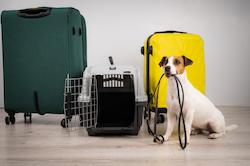Living in Libya: the ultimate expat guide
Everything you need to know for a successful life in Libya.
In North Africa, Libya is an interesting expat destination for the ones looking for challenges. The country is in a transitional state, offering lots of coming opportunities to foreign investors and professionals. Apart from the major oil sector, career prospects are available for expats in the telecommunications and NGO sectors. English teachers are also warmly welcomed in public universities.
Everyday life in Libya
Want to know what life in Libya is really like? Here's a taste: explore the country, find tips to use transportation, to set up internet and phone services, and everything you need to live like a local.
Join the Libya expat community
Connect with +3M members
Share your experience and get insights from fellow expats

Best VPN providers
Browse the web securely with a VPN.

